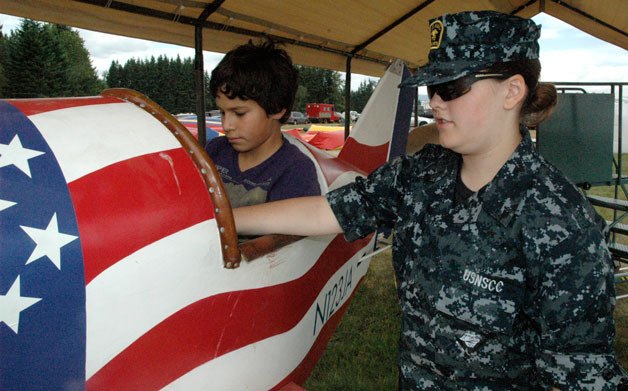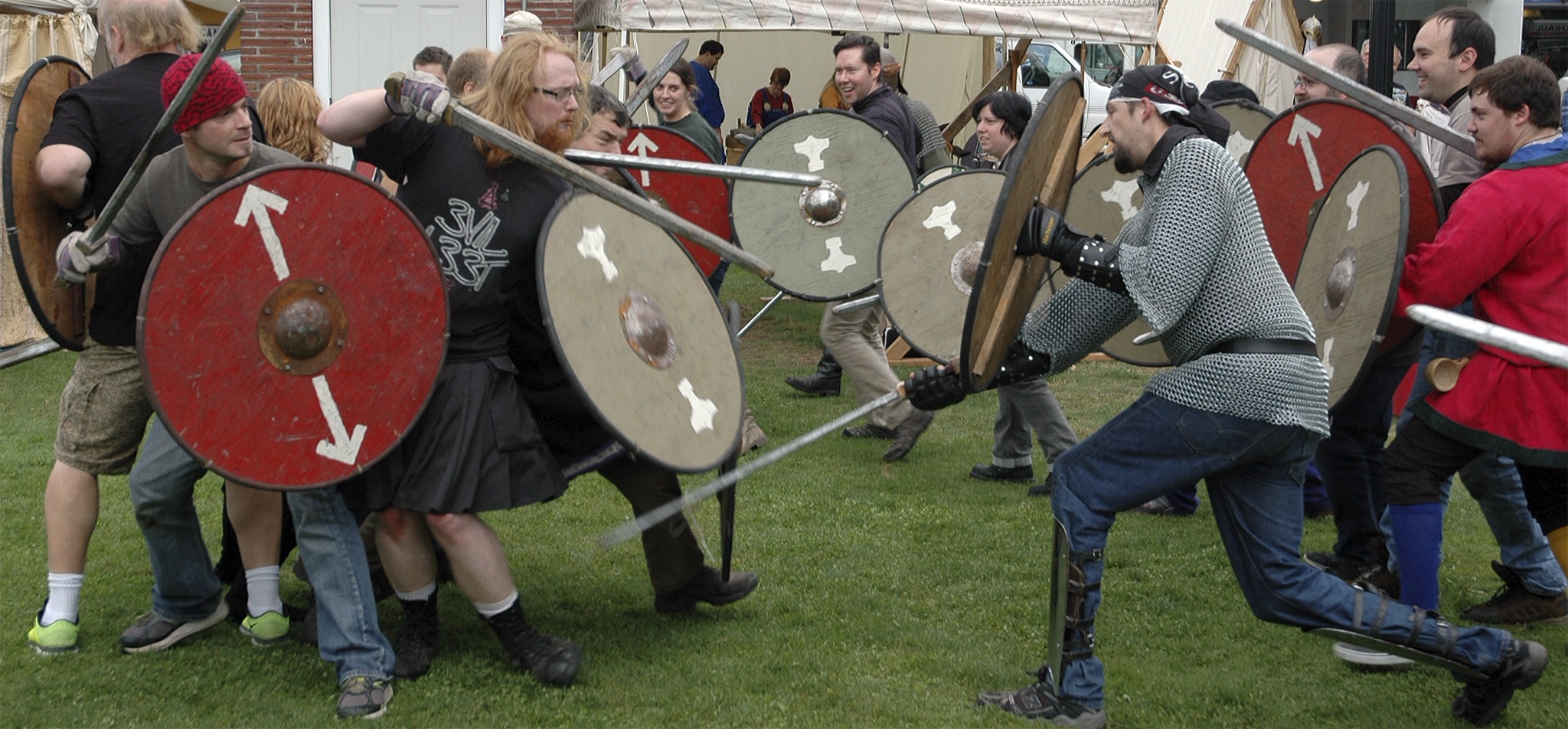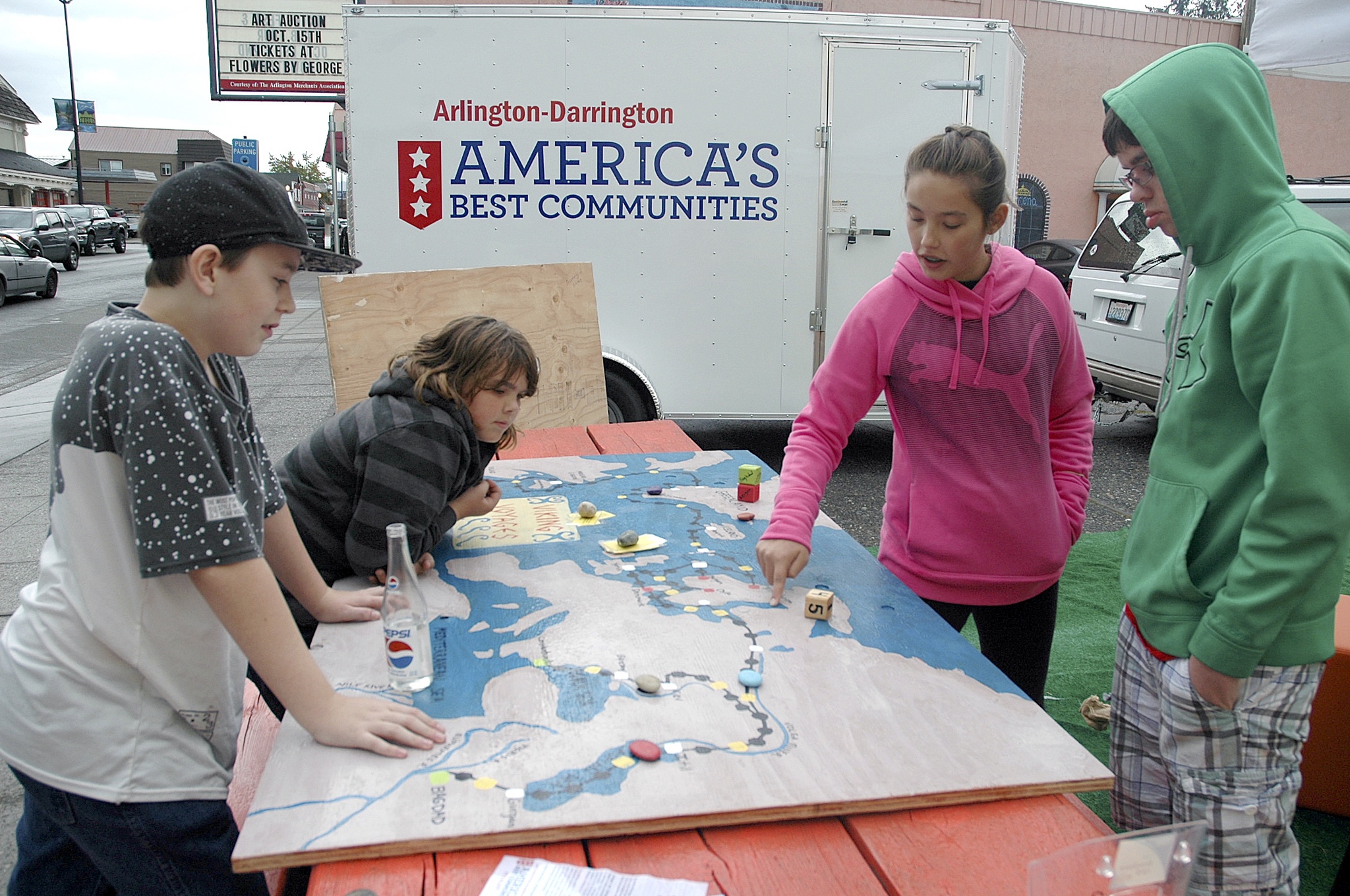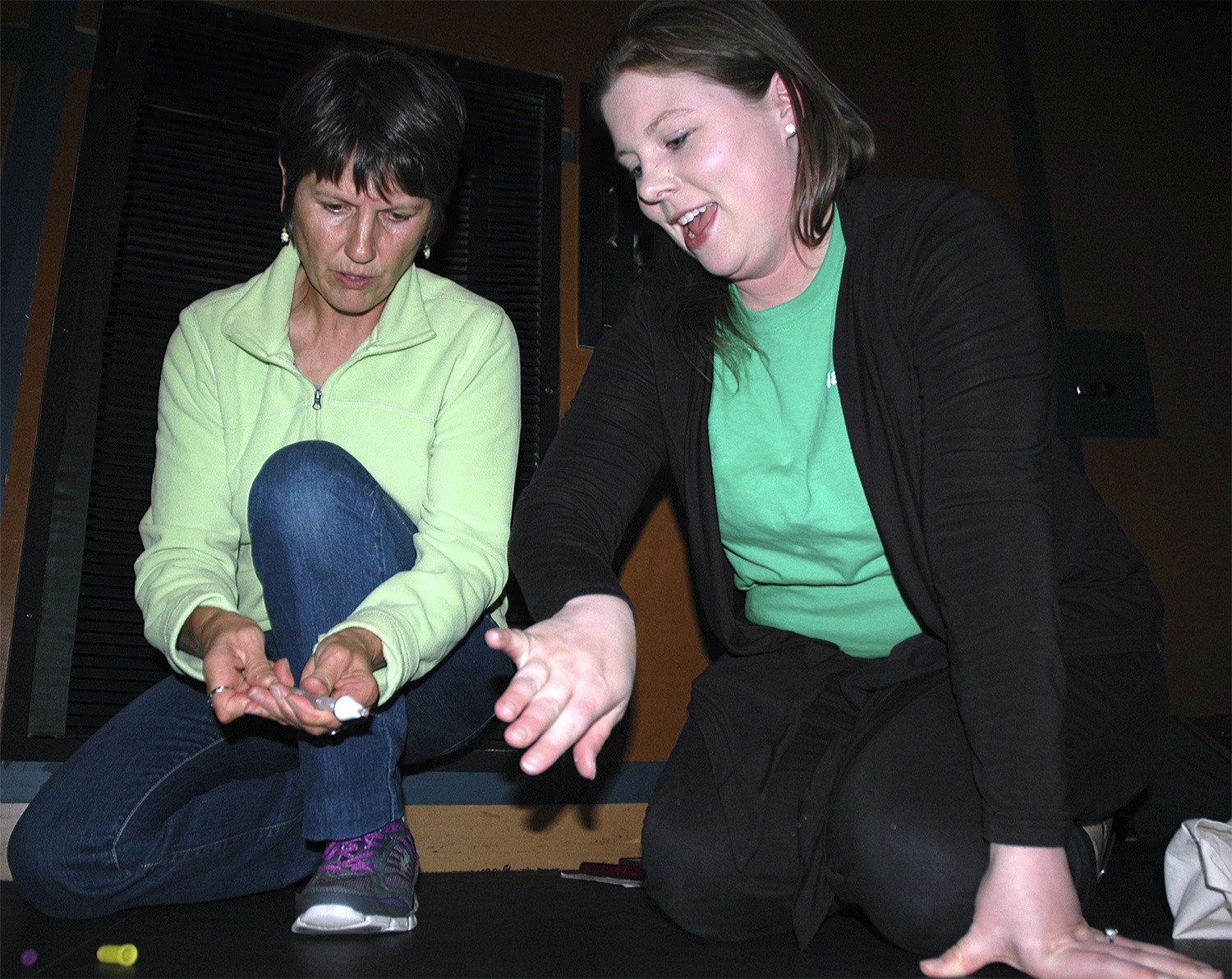ARLINGTON — In spite of a shortened schedule, the 2013 Fly-In at the Arlington Airport drew much larger crowds than last year, according to Arlington Fly-In Executive Director Barbara Tolbert.
“Last year, we had horrible weather and I’d guess around 600 pilots showed up,” Tolbert said. “This year, the weather was perfect and we were close to 1,000 pilots at our peak. It’s one of the best turnouts I’ve seen, not only in numbers of aircraft, but also in their variety.”
The variety was on display even within the themes of each of the Fly-In’s three days this year, from July 11-13. On the July 12 “Vintage Day,” Phil Taylor of Lake Forest Park and Larry Dunn of Arlington showed off two very different 1930s-era aircraft.
Taylor picked up his 1930 Travel Air 4000 in Texas in 1969, “an antique even then,” and was forced to undo its conversion into a crop-duster in order for the FAA to allow him to fly it again.
“After World War II, a lot of these planes were converted to crop-dusters, but that’s an FAA-restricted category,” Taylor said. “I had to return it to its former standard for it to be safe to fly.”
Taylor paid $3,500 for the Travel Air in 1969 dollars, which he estimated would run him as much as $40,000 today, especially given the rarity of both certain replacement parts and mechanics who are familiar enough with the aircraft to work on it. Still, in spite of the considerable investment of time and money, he deemed it all worthwhile.
“It’s a little bit of nostalgia that turns back the clock,” Taylor said. “That engine sounds the same today as it did decades ago. You can just imagine the way it was back then.”
Just as Taylor was eager to show off his plane’s fabric-lined brakes, so too was Dunn quick to tout the real wood paneling he’d laminated and installed in his 1938 Beechcraft D175. Since acquiring his own plane in 1990, Dunn estimated that he’s invested close to $100,000 and several years into restoring the Beechcraft, whose features he cited as state of the art for the aircraft’s era.
“It had retractable landing gear back when you still had Model-As on the road,” said Dunn, who added that he made sure to receive his wife’s blessing for each stage of his purchase and restoration of the plane, after she requested that he get a faster aircraft. “That’s why I got the stagger-wing.”
Dunn’s father got his pilot’s license through the G.I. Bill, and from childhood, Dunn knew that he would be a pilot too.
Pilots of a different kind were able to blow off some steam that evening, as the “Hot Air Balloon Night Glow” lit up the skies that evening, albeit without one key ingredient.
Mark Simburger, safety officer for the event, explained that, if the wind speed had stayed below the safe maximum of 7 knots, the four hot air balloonists would have been able to inflate their balloons while their baskets were tethered to the ground, but because the gusts were above 7 knots, the balloonists detached the balloons from the baskets and instead showed off how high they could make their flames go.
“This is probably one of the most accessible ways for people to get right up close to the balloons,” Simburger said. “We’ve even picked people out of the crowds to help us get the balloons out. This is the first time we’ve called off the glow here in many years.”
Dawn Rushkarski of Monroe was voted as having the best flames in the “Candlestick” competition that substituted for the night glow.
“I’ve lost count of how many times I’ve come to the Fly-In,” Rushkarski said, as her son Alexander sent another gout of flame into the air in triumph. “I just love the joy that this spectacle gives the crowds.”
The Paul Allen Flying Heritage Collection was represented during the “Warbird Day” of the Fly-In on July 13 by their restored Republic P-47D Thunderbolt, which bore the “Tallahassee Lassie” originally painted on it by its pilot, Ralph Jenkins.
“There were three planes that bore Tallahassee Lassies,” said Andy Muntz, a docent for the Paul Allen Flying Heritage Collection. “She had fewer and fewer clothes each time, so this was the final one. This was from a photo that the actual ‘Tallahassee Lassie’ sent to Jenkins, and it’s just one part of one of our most authentic restorations of aircraft from that 1940s era.”
According to Muntz, Jenkins married the “Tallahassee Lassie” after World War II.







